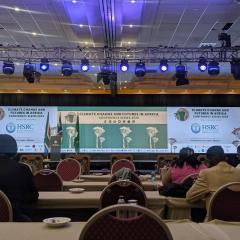
Why Flying Labs’ STEM Activities Are Changing Lives in the Global South
February 20th, 2025
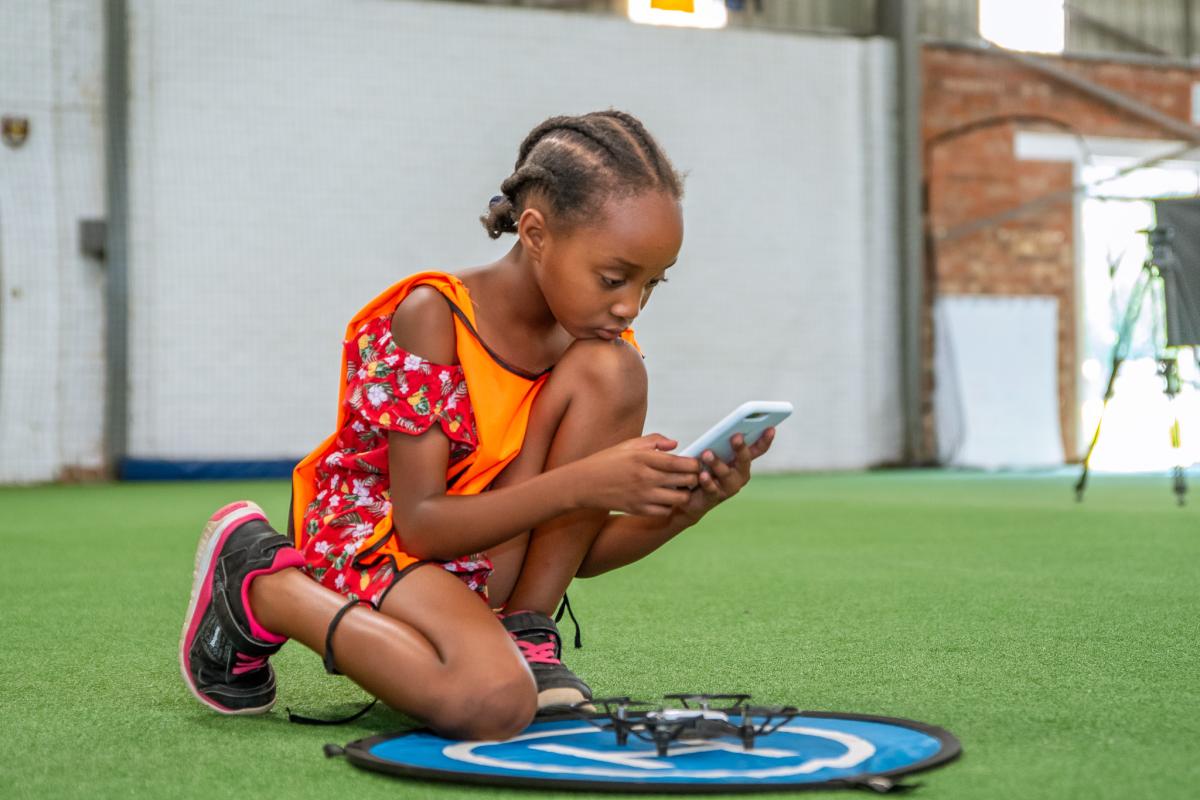
What gives Flying Labs the credibility to lead STEM education in the Global South? The answer lies in the stories they have cultivated—stories of children in remote villages seeing a drone for the first time, their wide eyes reflecting wonder and possibility; stories of young women realizing that technology isn’t a distant dream but a tool they too can wield. For over five years, Flying Labs, in partnership with WeRobotics, have turned these small moments into movements of change.
Now, WeRobotics seeks to weave a new narrative with the STEM Sheroes program, a vision rooted in the simple idea that girls and women deserve a rightful place in the technology space. It is about access. It is about lighting a path. It is about girls growing up knowing they can become innovators, leaders, and entrepreneurs who use technology not just to imagine a better world but to build it.
The journey begins with something as gentle as a picture book. From there, the path widens: hands-on STEM courses during school years, drone and data training for aspiring professionals, and finally, entrepreneurship programs that transform dreams into tangible ventures. Each step prepares girls to claim their place in a world often designed without them in mind.
To organizations wondering what it looks like to guide a girl from a moment of curiosity to a lifetime of STEM achievements, WeRobotics offers STEM Sheroes as the answer. WeRobotics and Flying Labs have shown what is possible when you combine local expertise with a vision for global impact. And what does this impact look like? Here, we offer a glimpse of what we will build on with this program.
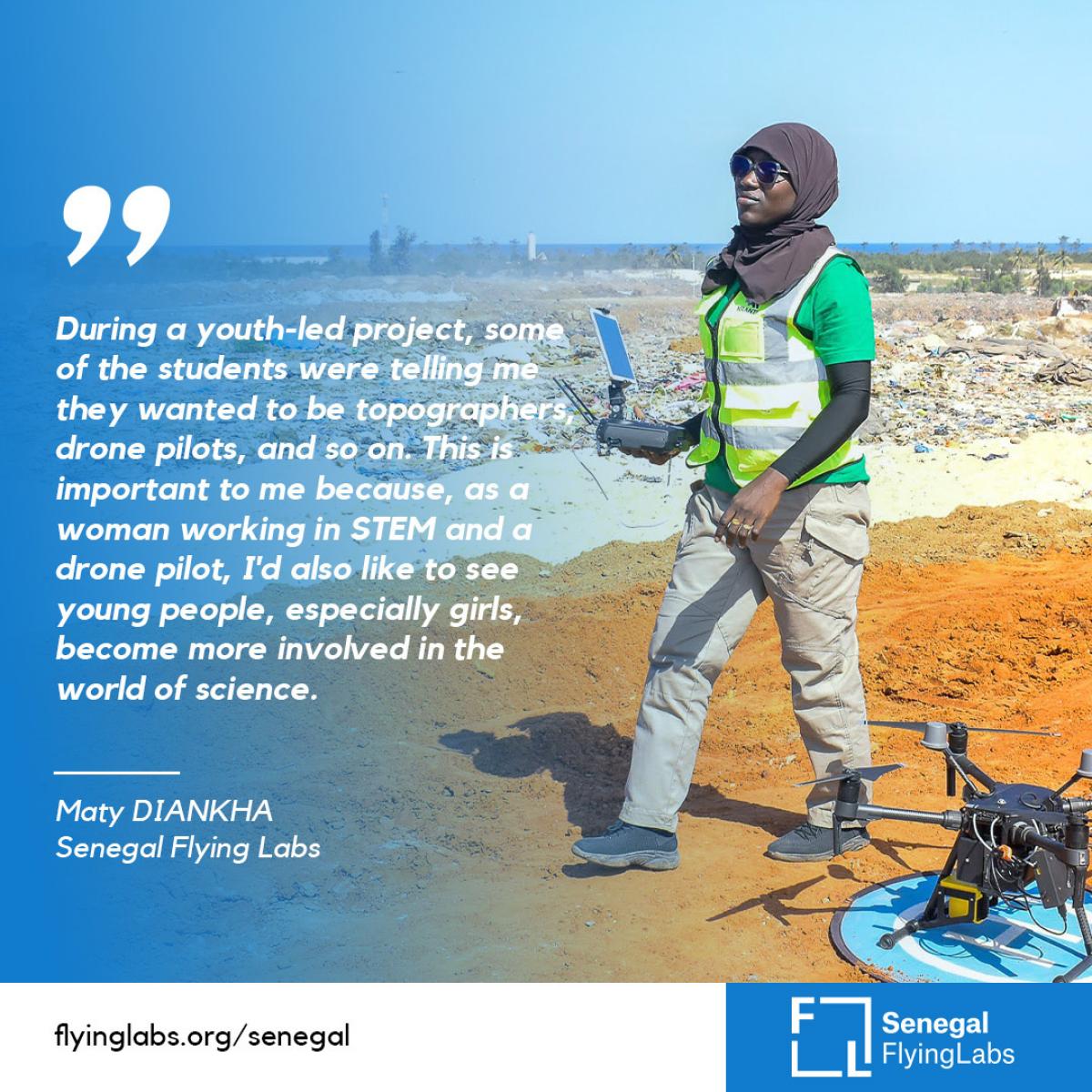
1. New worlds opening up
For many children and youth in the Global South, Flying Labs' STEM activities provide their first exposure to new technologies. Flying Labs primarily use drones in their STEM programs because of their remarkable ability to captivate and engage young minds. Drones serve as an ideal gateway to technology, offering a hands-on introduction to various aspects of STEM, ranging from hardware and software to coding, data collection and analysis, and practical applications for youth-led activities. The experience opens their minds to new possibilities in science, innovation, and problem-solving. They get to envision for the first time what is possible when technology is applied to solve the local challenges they are already acutely aware of.
Zimbabwe Flying Labs has given over 2,000 young learners the opportunity to interact with drone technology for the first time. Diana, a team member, recalls visiting remote areas where no student had ever seen a drone. “To see that impact and get them to think about their future aspirations in a different light, including drone technology or other innovations, was really exciting for us,” she shares.
And from these first experiences sprout the economic benefits of a youth population equipped with career direction and the means to find opportunities. At Kenya Flying Labs, STEM coordinator Mary Jane Wangari homes in on what this really means long-term. “Witnessing the transformation of two students who transitioned into becoming youth instructors has been immensely gratifying. They not only absorbed the knowledge and skills imparted during the program but have actively taken steps to obtain their remote piloted licenses.”
The earlier children are introduced to STEM experiences, the more likely they are to embrace them and embark on a journey toward becoming not just digital natives—as the younger generations are often called—but innovative inventors. With their deep understanding of technology, these young minds can then shape the future. Flying Labs are leading the way in making this vision a reality.
2. It can take a child to raise a village.
In many countries in the Global South, the main urban centres are exposed and connected to the global village and its advancements. However, a step outside of these environments reveals a stark disparity in access. Rooted in the communities they work in, Flying Labs are positioned to reach not just students in urban areas but those in underserved and remote areas as well, ensuring equitable access to STEM education.
India Flying Labs experienced this first-hand during their STEM activities, bringing to the fore questions about what it means to foster true accessibility in STEM education. As a result their Technology on Wheels project imagines a future where they can take their technology with them on the road, into under-resourced communities.
What we have learnt is that when one student is introduced to drones, the knowledge often spreads throughout their community, inspiring others. A group of children learns in a Flying Labs STEM workshop what they can achieve with this technology, and the excitement spills over to their friends and family. The indirect exposure often triggers curiosity and discussions about innovation, spreading awareness and impact far beyond the initial group such that ultimately, the whole community learns with them. It takes a village to raise a child, but it can also take a child to raise a village.
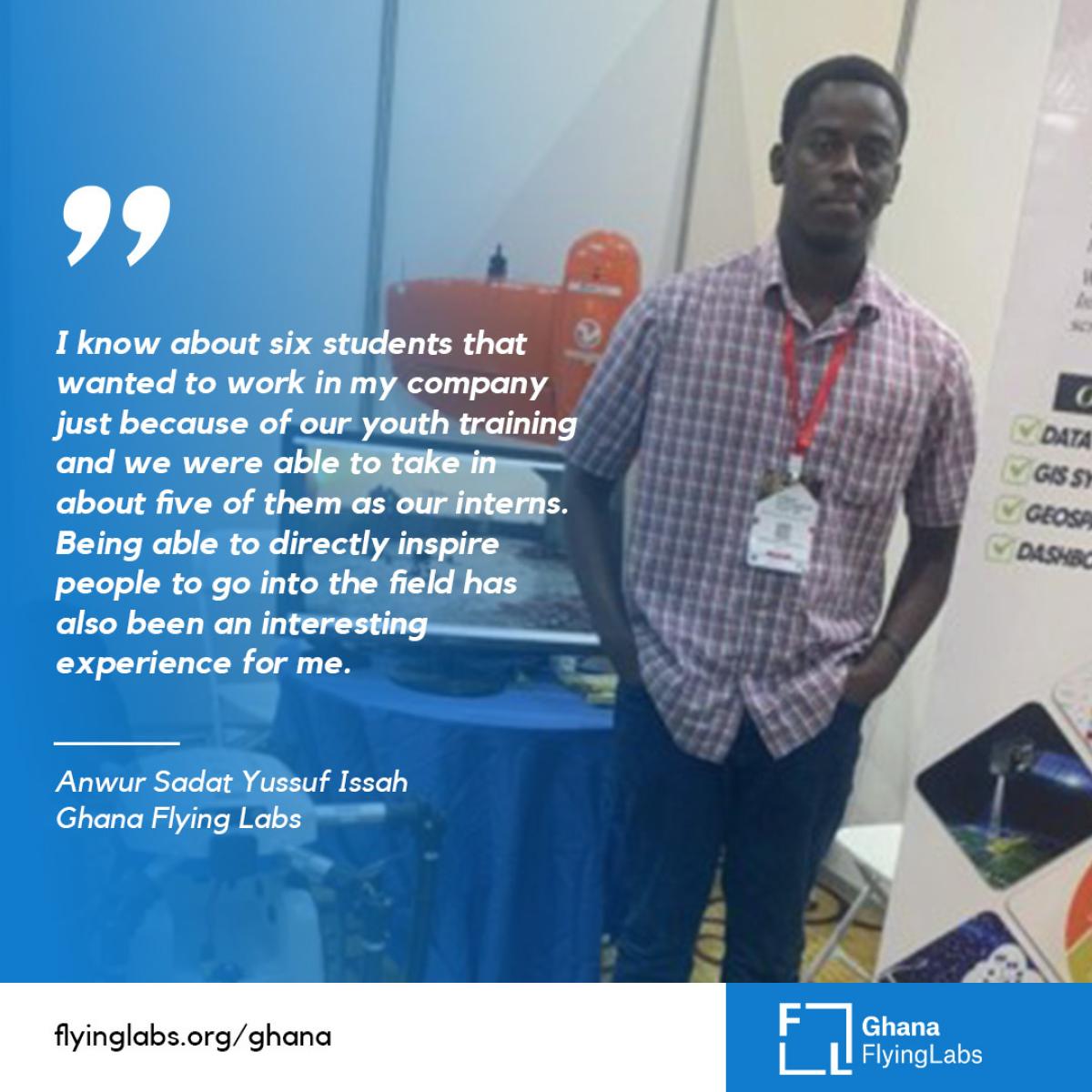
3. Stronger relationships, stronger communities
Relationships lead to relationships lead to relationships. They become the glue that binds a community together as they continually expand our access to one another and the space for collaboration.
Building partnerships with like-minded organizations is essential to WeRobotics’ and Flying Labs' approach to STEM education. Working together with others in the local playing field allows us to expand our reach, share additional resources, and amplify our impact. The trust arising from such partnerships makes for thriving local, national, and regional ecosystems, where each organization can play to its strengths. As local experts, Flying Labs are well placed to establish these partnerships with other local stakeholders and create startling progress towards the shared goal of providing equitable access to STEM education.
“To give you an example, our partners the Africa-Asia Youth Foundation introduced us to the Ministry of Education. They would go and say, ‘We already have a relationship with you and we are doing a workshop. We have invited our partners who do this kind of training for youth to give the students more exposure.’ It helped us because they spoke on our behalf. So by the time we got there, the foundation had been laid: they know who we are and what we do. So there was trust that had already been built by our partners, speaking on our behalf.”
— Diana, Zimbabwe Flying Labs
The partnership between Flying Labs and WeRobotics for the STEM Sheroes program is a good example of this. It brings together Flying Labs’ deep on-the-ground expertise in running STEM activities and WeRobotics’ strategic, global perspective as the steward of the Network. With STEM Sheroes, we have an opportunity to pull from the learnings we have made over the years and implement a program with a sustainable, long-term view. We have seen what it looks like when STEM programs are taught piece-meal to different demographics of female students; what can we expect to discover when we commit to a vision whose impact will be not just evident but undeniable in ten years?
4. Teaching at eye-level
There is a certain magic in speaking to someone at eye level—in standing on equal ground, looking directly into their world, and saying, “I see you. And I see how you see things.” Walls crumble, understanding deepens, and a bond forms that words alone cannot create. This is what guides STEM programs implemented by Flying Labs.
Flying Labs trainers, who are deeply rooted in the communities they serve, don’t look down or gaze from afar. As they engage with students they seek to understand their perspectives, priorities, and challenges. In doing so, they cultivate trust, opening the door to learning that resonates deeply and personally.
Flexibility lies at the heart of this approach. Rather than delivering rigid, one-size-fits-all lessons, they adapt in real time. They shape their training to fit the group in front of them, using accessible language, relevant examples, and hands-on applications that align with the students’ realities. Whether introducing drone technology or teaching data analysis, the goal is the same: to make STEM not just comprehensible but meaningful, tailored to lived experience.
This bottom-up approach is as much about listening as it is about teaching. Flying Labs don’t dictate what students need or assume their realities. Instead, they ask, they observe, and they respond. It is this ability to meet students where they are that promises to make STEM Sheroes a journey of its own kind.
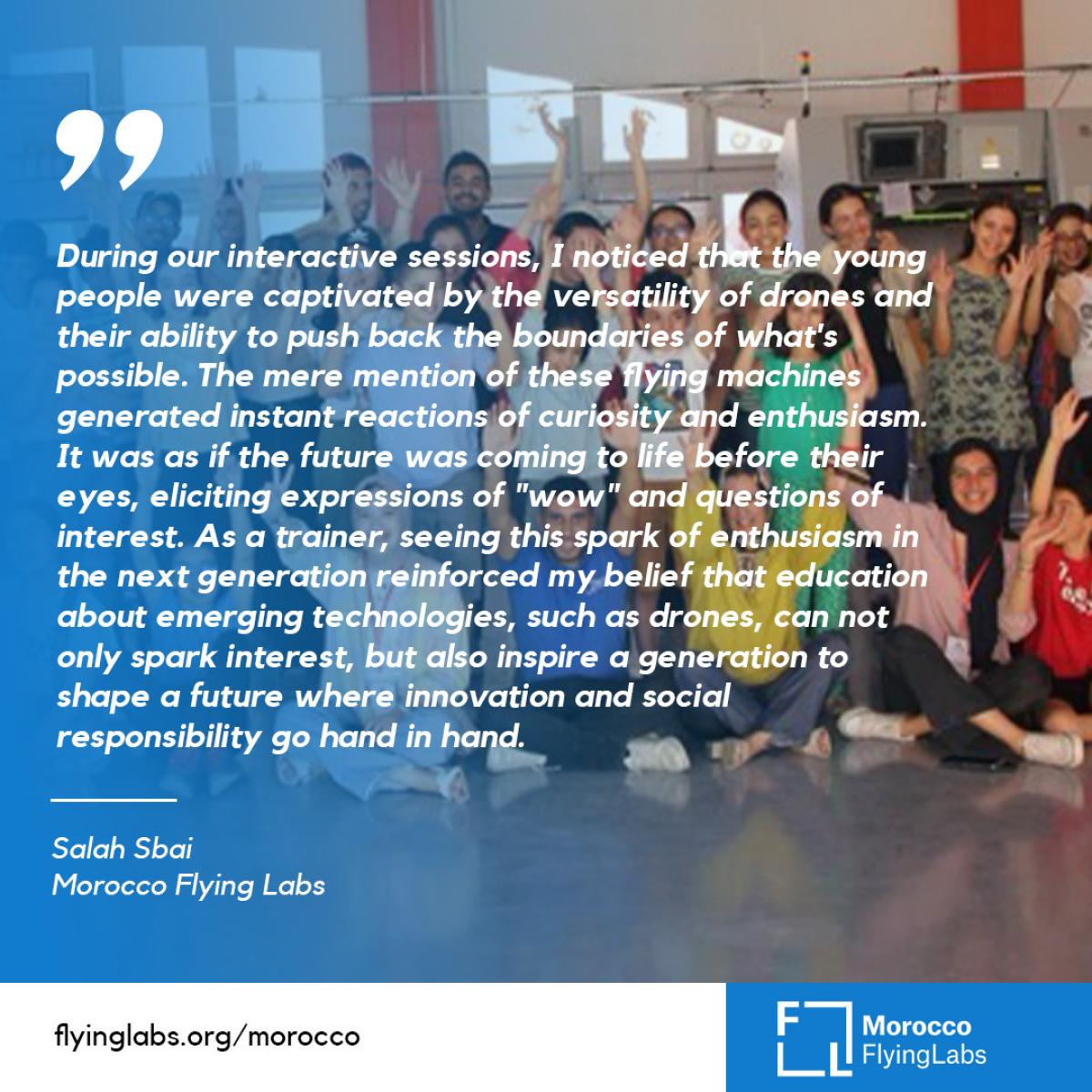
5. The power of what we believe about ourselves
A quiet revolution begins when someone truly believes in their own potential. It is a subtle shift at first, but it grows until it transforms not just their actions but their entire life’s trajectory. For many participants in Flying Labs’ STEM programs, this transformation starts with a spark of self-belief, often ignited for the first time.
One of the most profound outcomes of these programs is the confidence they instill in young people who are too often overlooked in the shaping of their own futures. Through exposure to new skills and knowledge, participants find themselves daring to dream bigger. They apply for job opportunities they once thought were beyond their reach. They confront challenges in their communities with a newfound sense of empowerment, knowing they have the tools to make a difference.
And the growth doesn’t stop at technical skills. Participants cite the programs’ impact on their teamwork, decision-making, critical thinking, and communication abilities. These are more than soft skills for the workforce; they are the building blocks of collaboration and community change. They enable these young people to bring not just competence but creativity and empathy to the work of improving their world.
_______________________________________________________________________________________
STEM Sheroes can show us what lies along the road that girls and young women need to take to step into roles as innovators, leaders, and changemakers, equipped to tackle the challenges of their communities and beyond. We believe this wholeheartedly. Tomorrow’s stories are authored by those bold enough to dream today. We invite organizations dedicated to bridging the gender divide in STEM to join us as partners to write this story. We are walking slowly but surely towards possibilities as vast as the skies. Reach out to us to begin a conversation on how we can get there together.
Recent Articles

